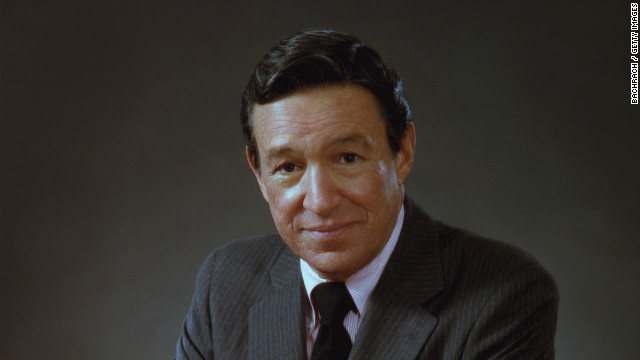
April 6-7, 2012 marks the 150th anniversary of the Battle of Shiloh, fought in southwestern Tennessee. Participants included the men of Battery B, First Michigan Light Artillery. Larry R. Houghton told their story in Michigan History Magazine, March/April 1993 issue. Excerpts from his article follow.
Excerpt #1 (Sunday morning, April 6)
In position at about 9:00 A.M., Battery B began firing for the first time at human targets. Sergeant Mills recalled,
We could see the enemy advancing at a rapid rate. We formed in battery, and poured upon them the deadly shell. Our position then being so near, it was responded to by a volley which fell like hail around and in our midst. We then retired a short distance [back to the Hamburg-Savannah Road] and ceased to fire. Here, for the first time, the dreadful havoc of war became a stern reality to us, and was no longer a picture of imagination.
Source: Seeking Michigan, April 3, 2012.
Private George Sidman, a drummer boy from Owosso, received the Congressional Medal of Honor for heroism displayed on a Civil War battlefield in June 1862. He was the youngest man in the state to receive the commendation.
While not particularly gifted on the drum, Sidman was kept around in the hopes that he would become a soldier. He earned a soldier’s reputation at Gaines Mill, Virginia a year after he enlisted. Only 16, Sidman fought off the enemy and added enouragment to the battle until a mini ball struck his hip. He continued to fight until he fainted.
He was given the honor for carrying the 3rd Brigade’s new flag in the charge on Marye’s Heights at Fredericksburg where Sidman was wounded again.
Source: Michigan Every Day
For more information, see George D. Sidman: the heroics of a Civil War drummer boy, Civil War Sources, December 21, 2008.
Also see A Distant Thunder: Michigan in the Civil War / Richard Bak. Ann Arbor, MI : Huron River Press, c2004.
On the day the U.S. declared war on Germany during World War I, the Detroit Free Press carried the following headline:
ASK SCHOOL AID FOR WAR CROPS: M. A. C. Head and State Market Director Plan Bill to Help Farmers in Harvest. SAY LABOR SHORTAGE PRESENTS BIG PROBLEM Prof. Cox Urges Bumper Yields of Corn and Beans; Student Cadets Are Ready.
Detroit Free Press, April 6, 1917.
High school boys and college students will be called upon to help with farm labor. Captain Ira Longnecker, Commandant of the Michigan Agriculture College Regiment, and students at the Michigan Agriculture College are waiting for the call of President Wilson for volunteers. Sport events will continue until more definite plans are received.
The Association of Public Safety Communications Officials (APCO), IEEE and the American Radio Relay League marked the 90th anniversary of the world’s first police radio system on Saturday, April 7 on Detroit’s Belle Isle State Park

Reposted from Detroitists Facebook Page.
Movie director Francis Ford Coppola received his middle name in honor of Henry Ford, not only because he was born in the Henry Ford Hospital but because of his musician-father’s association with the automobile manufacturer. At the time of Coppola’s birth, his father was a flautist as well as arranger and assistant orchestra director for The Ford Sunday Evening Hour, an hour-long concert music radio series sponsored by the Ford Motor Company. Two years after Coppola’s birth, his father was named principal flutist for the NBC Symphony Orchestra and the family moved to New York, settling in Woodside, Queens, where Coppola spent the remainder of his childhood.
Sources :
Michigan History, January/February 2013.
Francis Ford Coppola wikipedia entry
Francis Ford Coppola entry from Biography.com
On April 9, 1947 approximately 5,000 people passed his coffin per hour, which was on display at Greenfield Village.
Only 600 could get inside St. Paul’s Episcopal Cathedral in Detroit for his funeral, but 20,000 stood quietly outside in the rain.
From 1915 to 1950, Clara and Henry Ford called Dearborn, Michigan home, staying in their beloved residence known as Fair Lane. Upon Clara’s death, Fair Lane was given to Ford Motor Company, and in 1957 Ford donated the estate and the farmlands to the University of Michigan for construction of the Dearborn campus. In 1966, it was among the first in the nation to receive the prestigious designation as a National Historic Landmark from the National Register of Historic Places. In June 2013, ownership of the Estate transferred from the University to the Henry Ford Estate, Inc., a new 501c3 corporation that will now restore, reimagine and reopen the Estate.
For the full article, see Don Lochbiler, “‘I Think Mr. Ford is Leaving Us'”, Detroit News, July 22, 1997.
Also see Henry Ford Estate entry.
John Serba, “14 fascinating facts about Henry Ford“, MLive, July 7, 2017.
The Fairy Doors of Ann Arbor are a series of small doors that are a type of installation art found in the city of Ann Arbor in the U.S. state of Michigan. The first one appeared in the baseboards of the home of Jonathan and Kathleen Wright in 1993. Subsequently several others were discovered in their home; in the fireplace surround and two in the kitchen. On April 7, 2005 the first was seen in public on the exterior of Sweetwaters Coffee and Tea. Since then, ten more have shown up around Ann Arbor (as well as a “goblin door” parody), and seven of the original “public” doors still exist.

On the morning of April 7, 2005, the first public fairy door appeared outside Sweetwaters Coffee and Tea. It is believed that it was installed by Jonathan B. Wright, creator of www.urban-fairies.com and author of the children’s book Who’s Behind the Fairy Doors?. The next was installed outside of the Ann Arbor gift store Peaceable Kingdom, and appeared on April 17, 2005. The third door was found on May 11, 2005 outside of the Selo-Shevel Gallery art gallery. On June 9, 2005, Jefferson Market received a fairy door, but the store closed in October 2007. The Ann Arbor Framing Co. discovered the next door on August 17, 2005, but the Ann Arbor Framing Company closed in the summer of 2008 and the fairy door vanished. The concert hall The Ark hosted the next door when it appeared August 25, 2005. The furniture and gift store Red Shoes was next, and it appeared on November 17, 2005. On April 11, 2006 a fairy door appeared at the boutique Voilà. When Voilà closed on November 15, 2006 the fairy door disappeared as well. The ninth door was installed in the back of Nicola’s Books on September 8, 2006 was built into a bookcase and books at the Ann Arbor District Library on November 4, 2006. In 2010 a rural fairy door appeared in a not-for profit PreSchool and dependent older adult Day Care in Dexter, MI called Generations Together. It is said to have a portal that can be found in Gordon Field which is located in front of Gordon Hall a historic landmark in Dexter. They are so new they have not been pictured and described in detail anywhere but on the urban-fairies.com website.
Because Urban Fairies are as fickle as any Woodland or Flower Fairies, the locations change with whims. At any given time, there may or may NOT be a door when you look. However here is a link to locations posted on the Urban Fairies Operations website.
Fairy Doors of Ann Arbor” Wikipedia entry.
“These Tiny Doors Are Hidden All Around This Town. But The Reason Why They Were Built? It’s Brilliant”, The Meta Picture, December 2, 2013.
Mike Wallace, the longtime CBS newsman who died Saturday at age 93, kick-started his lengthy broadcast career at WOOD Radio in Grand Rapids, according to the station and multiple media reports.
Wallace, who died Saturday at a New Haven, Conn., care facility, took a job at the radio station in early 1939 upon graduating from the University of Michigan, said Phil Tower, WOOD Radio’s program director.
For more information, see Zane McMillin, “Mike Wallace, longtime CBS newsman, started broadcast career in Grand Rapids”, MLive, April 8, 2012.
Mike Wallace entry from Biography.com
On this International Beaver Day, April 7, 2018, take a moment to marvel at the industrious critter of toothy fame, which you may not realize is actually responsible for some of Michigan’s oldest surviving infrastructure.
According to a fall 2015 study by ecologist Carol Johnston of South Dakota State University in Brookings, more than 70 percent of beaver dams mapped in the Upper Peninsula near Ishpeming in the 1860s are still around today.
Johnston, who published her findings in Wetlands scientific journal, compared an 1868 map of beaver ponds drawn by anthropologist Lewis Henry Morgan with aerial photos of the area in 2014 to analyze long-term endurance of the wild dams.
Of the 64 in Morgan’s map, drawn in his 396-page book “The American Beaver and His Works,” 72 percent of the beaver dams and ponds remain in some form.
According to Science Magazine, Johnston said that beavers, which generally live about 10 years, might not have continually occupied every dam in the last 150 years. There are studies that suggest beaver colonies can last 1,000 years.
 A beaver in Horseshoe Lake at Denali National Park in Alaska.
A beaver in Horseshoe Lake at Denali National Park in Alaska.
In his 1868 book, Morgan reached the same conclusion.
“The evidence from these, and other sources, tends to show that these dams have existed in the same places for hundreds and thousands of years, and that they have been maintained by a system of continuous repairs.”
That would likley make the beaver dams around Ishpeming older than Michigan’s oldest surviving buildings — the 1780s-era fort officers quarters, McGulpin and Biddle houses on Mackinac Island — and perhaps even older that some of the old growth, 500-plus year-old white cedar trees on South Manitou Island.
For the full article, see Garret Ellison, “1860s map proves beavers built Michigan’s oldest infrastructure“, MLive, April 7, 2016.
What is perhaps the greatest sports song of all time came about thanks to a waitress, a napkin, and Larry Bird.
And the writer is a Michigan native and basketball fan who supports both the Spartans and Wolverines.
David Barrett will be at Monday’s national championship. If he sticks around until the final buzzer, after the confetti falls, he’ll see the winning team watch a tribute video backed by his song. Like the previous 32 champions, either Virginia or Texas Tech will have its “One Shining Moment.”
The song is iconic: the opening drum kick, the uplifting piano chords, the exhilarating brass. And those incredible lyrics.
The ball is tipped, and there you are…
Barrett, born in Pontiac, Michigan, and raised in the Detroit metropolitan area, attended Albion College on a basketball scholarship. Music was his passion, and after a performance in East Lansing in March of 1986, a then-31-year-old Barrett found himself alone at the Varsity Inn bar.
An attractive waitress sat next to him and, Barrett, overcome with nerves, started talking about Larry Bird, whose Boston Celtics were playing on a nearby TV.
Uninterested, she left. And Barrett jotted a song title on a napkin.
The next morning, while waiting for a friend to show up for breakfast, he wrote the lyrics on a different napkin in about 20 minutes. He recorded it, and sent a tape to Armen Keteyian, a friend and journalist in New York. Keteyian took it to a CBS Sports executive, who loved it.
After Indiana beat Syracuse for the 1987 college basketball national championship, “One Shining Moment” made its television debut, played over highlights from the NCAA Tournament.
It has played at the conclusion of every Tournament since.
Barrett is in Minneapolis this weekend, courtesy of the NCAA. He performed, spoke, and mingled with guests at a workshop on Sunday, which just happened to be his 65th birthday.
Barrett has composed for the Olympic Games. He’s written Emmy-winning scores for PBS documentaries. But he’s best known for “One Shining Moment.” (His personal email address includes the song’s title.)
For several years, CBS played the version recorded by Barrett. Other versions, with Teddy Pendergrass and Luther Vandross on vocals, were used. Vandross’ version has been used since 2011.
Barrett said on Sunday that “One Shining Moment” was supposed to be played by a better pianist but he was too disciplined.
“I played it like a chimpanzee on too much coffee,” Barrett said. “But it worked because I got after it.”
The music and vocals are top-notch, but the lyrics are what grab listeners.
“The ball is tipped // and there you are // you’re running for your life // you’re a shooting star // And all the years // no one knows // just how hard you worked // but now it shows…”
“And when it’s done // win or lose // you always did your best // cuz inside you knew…”
It is the perfect song for the moment, encapsulating the excitement and emotion of March Madness.
Barrett said he never expected the song to have such an impact.
“I envisioned nothing. I was writing a lot of songs. This was one of them. It felt inspired when I wrote it. It just ‘whooshed’ out of me.”
Source : Andrew Kahn, “‘One Shining Moment’: The story behind the best song in sports history (and the Michigander who wrote it)“, MLive, April 8, 2019.


